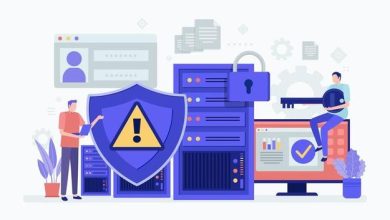Akamai Report Shows 42% of Web Traffic is Bots, with 64% Malicious

Akamai Technologies, Inc. (NASDAQ: AKAM), the cloud company that powers and protects life online, today released a new State of the Internet report that details the security and business threats that organisations face with the proliferation of web scraping bots. Scraping Away Your Bottom Line: How Web Scrapers Impact E-commerce finds that bots compose 42% of overall web traffic, and 65% of these bots are malicious.
With its reliance on revenue-generating web applications, the e-commerce sector has been most affected by high-risk bot traffic. Although some bots are beneficial to business, web scraper bots are being used for competitive intelligence and espionage, inventory hoarding, imposter site creation, and other schemes that have a negative impact on both the bottom line and the customer experience. There are no existing laws that prohibit the use of scraper bots, and they are hard to detect due to the rise of artificial intelligence (AI) botnets, but there are some things companies can do to mitigate them.
“Every business with an online storefront relies on web scraper bots to some extent. The challenge arises when these bots are misused, as their similar functions make it difficult to distinguish between beneficial and malicious ones. It is then compounded by the rapidly evolving scraper landscape which renders traditional defences like firewalls ineffective,” said Reuben Koh, Director of Security Technology & Strategy, APJ, Akamai Technologies. “Now, more than ever, e-commerce businesses, especially in APJ which is a key global commerce hub, must invest in solutions that are fit for purpose, capable of adapting and keeping up with the unpredictable and iterative attacks posed by malicious bots – especially if they are looking to regionalise and expand their customer base, opening them up to further threats.”
Key findings from the report include:
- AI botnets have the ability to discover and scrape unstructured data and content that is in a less consistent format. Additionally, they can use actual business intelligence to enhance the decision-making process through collecting, extracting, and then processing data.
- Scraper bots can be leveraged to generate more sophisticated phishing campaigns by grabbing product images, descriptions, and pricing information to create counterfeit storefronts or phishing sites aimed at stealing credentials or credit cards.
- Bots can be used to facilitate new account opening abuse — which, according to recent research, composes up to 50% of fraud losses.
- Technical impacts that organisations face as a result of being scraped, whether the scraping was done with malicious or beneficial intentions, include website performance degradation, site metric pollution, compromised credentials attacks from phishing sites, increased compute costs, and
The Scraping Away Your Bottom Line research report offers mitigation strategies against scraper bots and features a case study that shows how websites operate much faster and more efficiently once defences against these bots are put into place. In addition, the research addresses compliance considerations that must be taken into account in light of these increasing attacks.
This year marks the 10th anniversary of Akamai’s State of the Internet (SOI) reports. The SOI series provides expert insights on the cybersecurity and web performance landscapes, based on data gathered from Akamai Connected Cloud.




